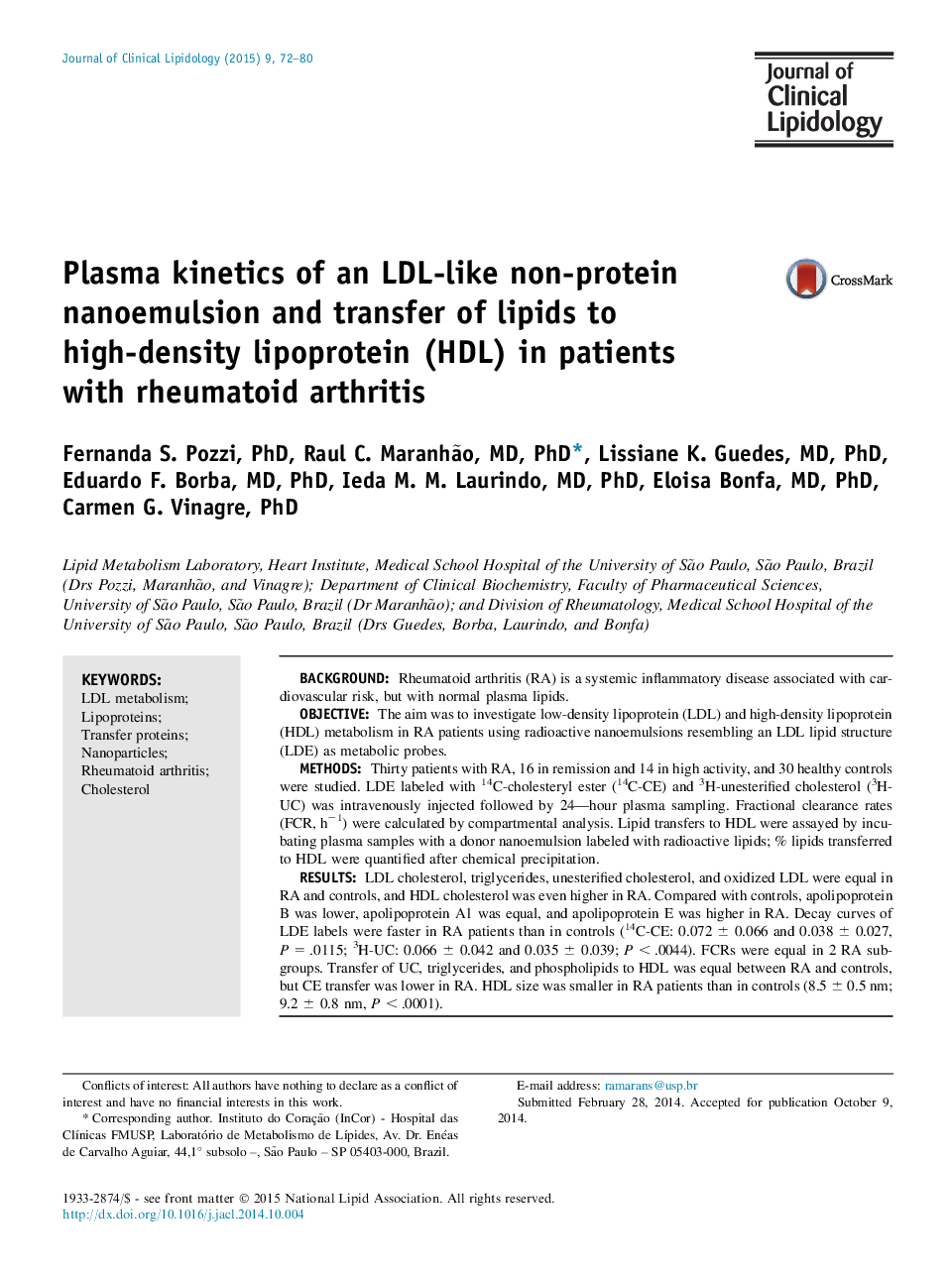| Article ID | Journal | Published Year | Pages | File Type |
|---|---|---|---|---|
| 5985515 | Journal of Clinical Lipidology | 2015 | 9 Pages |
â¢RA patients show normal plasma lipid profile.â¢Unesterified cholesterol and oxidized LDL plasma concentration were also normal.â¢RA patients showed faster LDL plasma clearance, as tested by a nanoemulsion method.â¢Lipid transfers to HDL, an important lipoprotein metabolic step was normal in RA.
BackgroundRheumatoid arthritis (RA) is a systemic inflammatory disease associated with cardiovascular risk, but with normal plasma lipids.ObjectiveThe aim was to investigate low-density lipoprotein (LDL) and high-density lipoprotein (HDL) metabolism in RA patients using radioactive nanoemulsions resembling an LDL lipid structure (LDE) as metabolic probes.MethodsThirty patients with RA, 16 in remission and 14 in high activity, and 30 healthy controls were studied. LDE labeled with 14C-cholesteryl ester (14C-CE) and 3H-unesterified cholesterol (3H-UC) was intravenously injected followed by 24-hour plasma sampling. Fractional clearance rates (FCR, hâ1) were calculated by compartmental analysis. Lipid transfers to HDL were assayed by incubating plasma samples with a donor nanoemulsion labeled with radioactive lipids; % lipids transferred to HDL were quantified after chemical precipitation.ResultsLDL cholesterol, triglycerides, unesterified cholesterol, and oxidized LDL were equal in RA and controls, and HDL cholesterol was even higher in RA. Compared with controls, apolipoprotein B was lower, apolipoprotein A1 was equal, and apolipoprotein E was higher in RA. Decay curves of LDE labels were faster in RA patients than in controls (14C-CE: 0.072 ± 0.066 and 0.038 ± 0.027, P = .0115; 3H-UC: 0.066 ± 0.042 and 0.035 ± 0.039; P < .0044). FCRs were equal in 2 RA subgroups. Transfer of UC, triglycerides, and phospholipids to HDL was equal between RA and controls, but CE transfer was lower in RA. HDL size was smaller in RA patients than in controls (8.5 ± 0.5 nm; 9.2 ± 0.8 nm, P < .0001).ConclusionRA patients were more efficient in removing atherogenic LDL from plasma, as indicated by higher CE and UC FCR, with in lower apolipoprotein B. This was unexpected because of the higher cardiovascular risk in RA.
